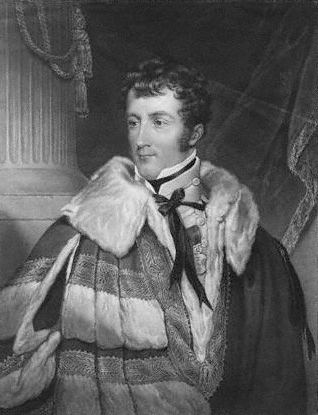Monarch William IV Nationality British Spouse Caroline Paget (m. 1817) | Name Charles 5th Prime Minister The Earl Grey Political party Ultra-Tories | |
 | ||
Born 3 August 1791
Richmond House, Whitehall Gardens, London ( 1791-08-03 ) Died October 21, 1860, Portland Place, London, United Kingdom Parents Charles Lennox, 4th Duke of Richmond Children Charles Gordon-Lennox, 6th Duke of Richmond Grandchildren Charles Gordon-Lennox, 7th Duke of Richmond | ||
Preceded by The Duke of Manchester Education Trinity College, Dublin Succeeded by The Marquess Conyngham | ||
Charles Gordon-Lennox, 5th Duke of Richmond and 5th Duke of Lennox, 5th Duke of Aubigny, (3 August 1791 – 21 October 1860), styled Earl of March until 1819, was a British peer, soldier, politician, and a prominent Conservative.
Contents
Background and education
Richmond was the son of Charles Lennox, 4th Duke of Richmond, and the former Lady Charlotte Gordon. He was educated at Westminster and Trinity College, Dublin.
Military career
Richmond (while Earl of March) served on Wellington's staff in the Peninsular War, during which time he volunteered to join the 52nd (Oxfordshire) Regiment of Foot's advance storming party on the fortress of Ciudad Rodrigo. He formally joined the 52nd Foot in 1813, and took command of a company of 52nd soldiers at Orthez in 1814, where he was severely wounded; the musket-ball in his chest was never removed. During the Battle of Waterloo he was ADC to the Prince of Orange, and following that man's wounding, served as ADC to Wellington. Richmond was chiefly responsible for the belated institution in 1847 of the Military General Service Medal for all survivors of the campaigns between 1793 and 1814. (There had only hitherto been a Waterloo Medal.) He campaigned in Parliament and also enlisted the interest of Queen Victoria. Richmond himself received the medal with eight clasps.
Political career
Richmond sat as Member of Parliament for Chichester between 1812 and 1819. The latter year he succeeded his father in the dukedom and entered the House of Lords. He was a vehement opponent in the House of Lords of Roman Catholic emancipation, and at a later date a leader of the opposition to Peel's free trade policy, as he was the president of the Central Agricultural Protection Society, which campaigned for preservation of the Corn Laws. Although a vigorous Conservative and Ultra-Tory for most of his career, Richmond's anger with Wellington over Catholic Emancipation led him to lead the Ultra's into joining Earl Grey's reforming Whig government in 1830 (Lang, 1999). He served under Grey as Postmaster General between 1830 and 1834. He was sworn of the Privy Council in 1830. Richmond was also Lord Lieutenant of Sussex between 1835 and 1860 and was appointed a Knight of the Garter in 1829.
In 1836, on inheriting the estates of his mother's brother, the fifth and last Duke of Gordon, he assumed the name of Gordon before that of Lennox.
Family
Richmond married Lady Caroline, daughter of Henry Paget, 1st Marquess of Anglesey and Lady Caroline Villiers, on 10 April 1817. The couple had five sons and five daughters, including:
Richmond died at Portland Place, Marylebone, London, in October 1860, aged 69. He was succeeded in the dukedom by his eldest son, Charles. The Duchess of Richmond died in March 1874, aged 77.
